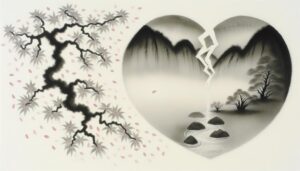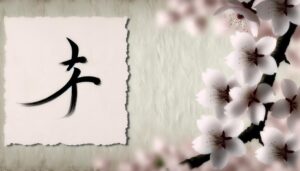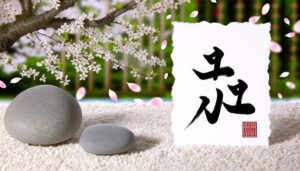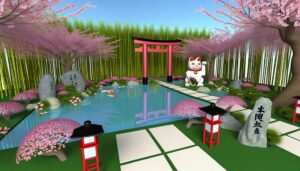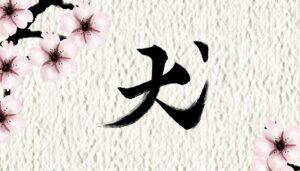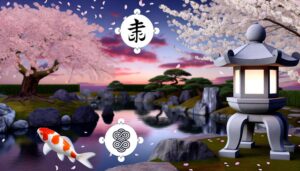What is the Japanese Symbol for Peace?
The kanji 平和 (heiwa) symbolizes peace in Japanese culture. Comprising characters 平 (hei) for tranquility and 和 (wa) for harmony, this symbol has profound historical significance, especially in post-World War II Japan.
It reflects the nation's commitment to global peace and shapes much of its contemporary identity. Additionally, the crane, a revered motif in Japanese art and folklore, represents peace and longevity.
The practice of folding a thousand origami cranes is a poignant post-war symbol of hope and reconciliation. To explore more about how these symbols shape Japan's cultural landscape, continue learning.
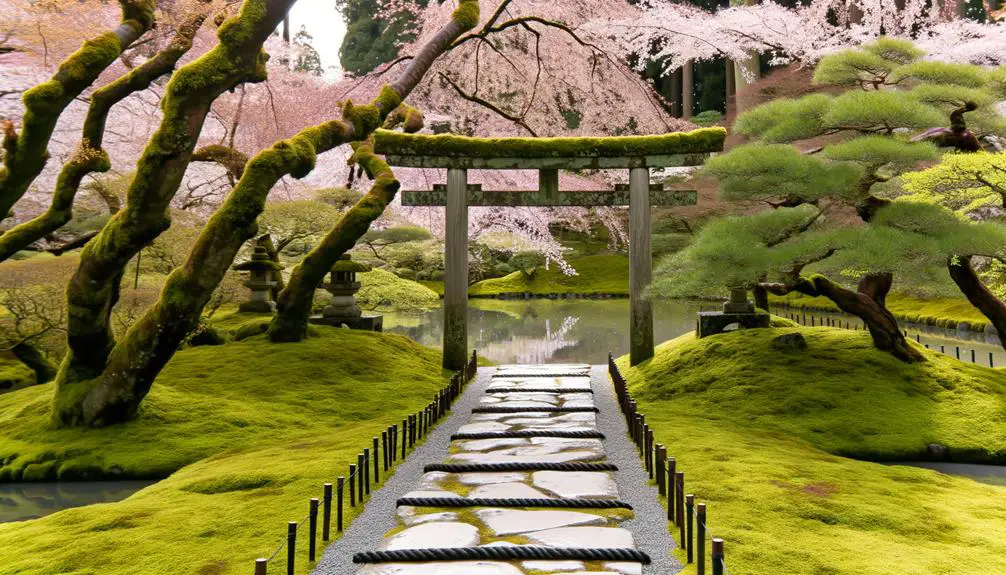
Key Takeaways
- The kanji for peace is 平和 (heiwa), combining characters for tranquility and harmony.
- The crane symbolizes peace and longevity in Japanese culture, especially post-World War II.
- Folding a thousand origami cranes is a Japanese tradition representing wishes for peace and good fortune.
- Hiroshima Peace Memorial Park features monuments like the Atomic Bomb Dome and Children's Peace Monument dedicated to world peace.
- Modern Japanese art frequently incorporates the kanji for peace, reflecting historical and contemporary themes of harmony.
Kanji for Peace
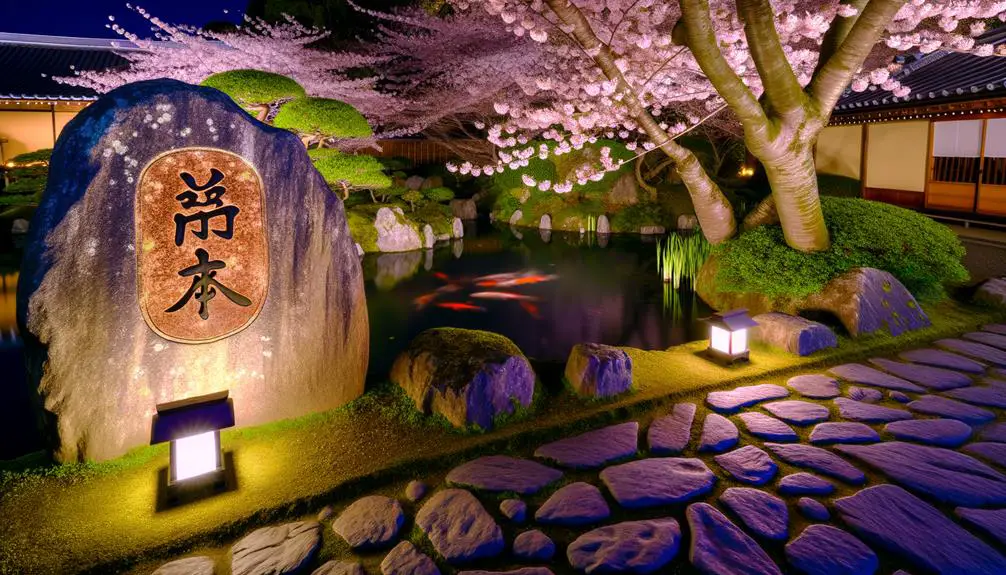
The Kanji for peace, 平和 (heiwa), embodies a profound historical and cultural significance in Japan, reflecting centuries of philosophical and social evolution. Derived from the characters 平 (hei), meaning 'flat' or 'calm,' and 和 (wa), signifying 'harmony' or 'Japanese,' heiwa encapsulates the ethos of tranquility deeply rooted in Japanese history.
Its historical context includes the post-World War II era, where peace became a national priority, shaping modern Japan's identity. Culturally, heiwa resonates with core principles from Buddhism and Confucianism, emphasizing balance, harmony, and collective well-being. The pursuit of heiwa has influenced Japanese art, literature, and daily life, underscoring the nation's enduring commitment to fostering a peaceful society.
This Kanji, therefore, is not merely a symbol but a reflection of Japan's collective consciousness.
The Crane Symbolism
The crane, a revered bird in Japanese culture, holds profound symbolism for peace and longevity, most notably through the ancient art of origami. Rooted in the legend of folding a thousand cranes, where one's wishes are believed to be granted, this tradition gained renewed cultural significance post-World War II, particularly through the story of Sadako Sasaki and her quest for peace.
Today, the crane continues to embody hope and reconciliation, serving as a poignant reminder of the enduring human spirit and the collective desire for a harmonious world.
Origami Crane Legend
Embodying centuries of cultural significance, the origami crane legend intertwines with Japanese traditions to symbolize peace, hope, and longevity.
Historically, cranes have been revered in Japan as mystical creatures with a lifespan of a thousand years.
The practice of folding a thousand origami cranes, known as senbazuru, is believed to grant the folder a wish or bring good fortune and recovery from illness.
This tradition gained global recognition after World War II, particularly through the poignant story of Sadako Sasaki, a young Hiroshima survivor who folded cranes in a bid for health and world peace.
Hence, the origami crane transcends mere artistry, embedding itself deeply within the cultural and historical fabric of Japan, carrying profound messages of resilience and aspiration.
Cultural Significance Today
Today, the crane remains a potent symbol in Japanese culture, representing enduring peace and the collective hope for a harmonious future. Rooted in historical traditions and the poignant story of Sadako Sasaki, the crane's cultural significance has evolved yet remains deeply ingrained.
- Peace Memorials: Cranes are often featured in peace memorials, such as Hiroshima's Children's Peace Monument.
- Literary References: Modern literature frequently uses crane imagery to evoke themes of peace and perseverance.
- Educational Programs: Schools incorporate crane folding into lessons on peace and historical awareness.
- Cultural Festivals: Festivals continue to highlight crane symbolism, reinforcing its message of peace and unity.
This multifaceted representation underscores the crane's enduring relevance in contemporary Japanese society.
Peace in Haiku
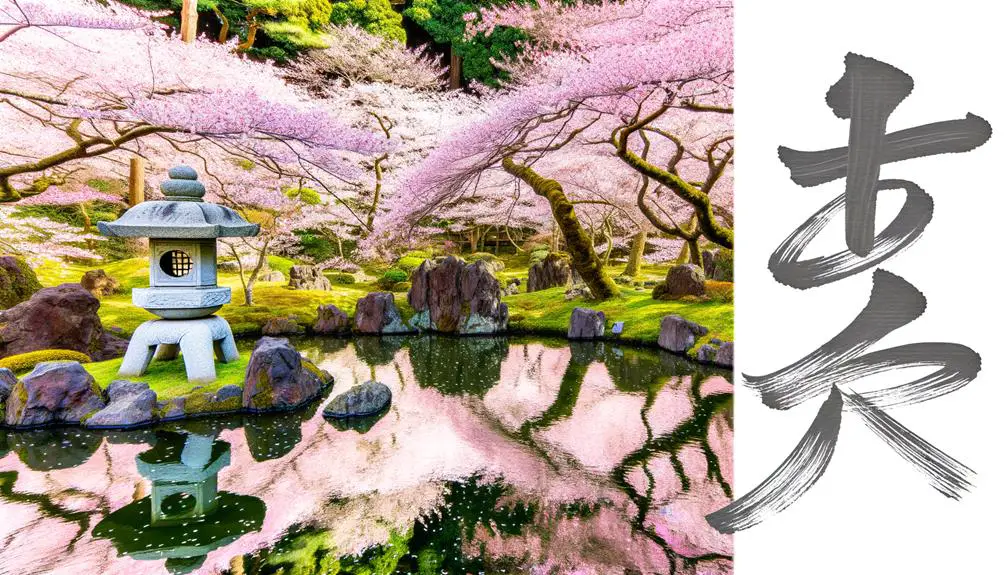
Haiku, a traditional form of Japanese poetry, has long encapsulated the essence of peace through its concise and evocative imagery. Originating in the 17th century, haiku distills experience into three lines, often invoking nature to reflect human emotions. This minimalistic form underscores the Japanese cultural value of simplicity and tranquility.
| Element | Description |
|---|---|
| Structure | 5-7-5 syllable pattern |
| Themes | Nature, seasons, human emotions |
| Cultural Role | Reflects Zen philosophy, promotes mindfulness |
The haiku's structure compels poets to convey profound meanings with brevity, often highlighting fleeting moments of serenity. Historically, haiku has offered respite during turbulent times, emphasizing inner peace. Its enduring appeal lies in its ability to connect deeply with readers, fostering a momentary escape into calmness.
Origami and Peace
Origami's intricate folds and delicate constructions have long symbolized peace and harmony within Japanese culture, serving as a meditative practice and a means of expressing profound artistic and philosophical values.
This ancient art form, originating from the Edo period, integrates spirituality with the physical act of folding paper, embodying principles of mindfulness and tranquility.
The cultural significance of origami in promoting peace is evident in the story of Sadako Sasaki, who folded a thousand paper cranes in hopes of world peace after the Hiroshima bombing.
Key aspects include:
- Historical roots: Origami's development during the Edo period.
- Symbolic meaning: The crane as a symbol of peace and hope.
- Therapeutic practice: Used for meditation and relaxation.
- Global impact: Internationally recognized as a symbol of peace.
Symbolic Gardens
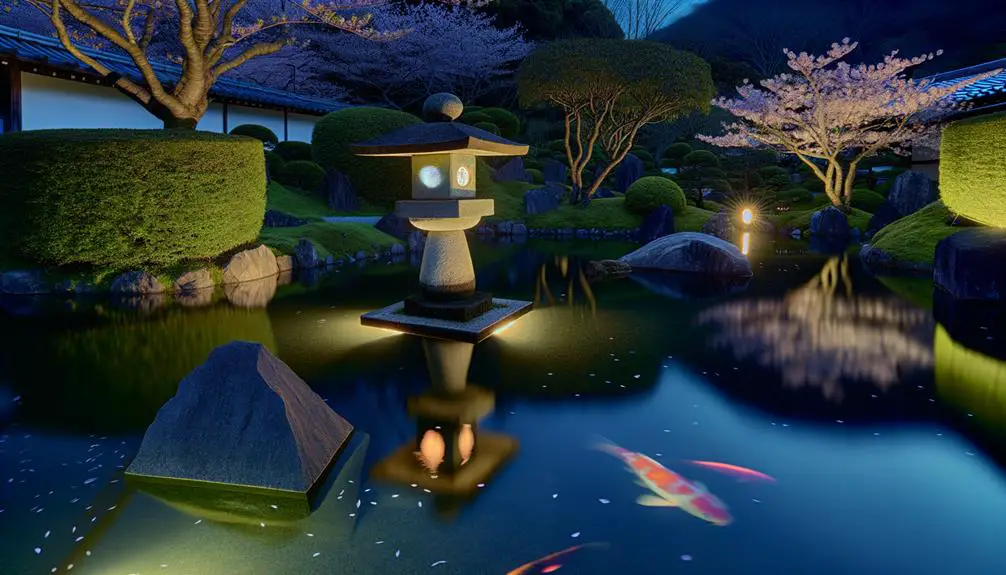
The cultural resonance of peace within Japanese tradition extends beyond paper folding to the meticulously designed symbolic gardens, which embody philosophical principles and serve as sanctuaries of serenity and contemplation.
Historically, these gardens emerged from the influence of Zen Buddhism, encapsulating a minimalist aesthetic that reflects the natural landscape. Elements such as rocks, water, and carefully pruned plants are thoughtfully arranged to evoke tranquility and introspection.
The cultural significance of these gardens lies in their ability to offer a physical space for meditation and a deeper connection to nature, thereby fostering inner peace. Their timeless design principles continue to inspire a global appreciation for the harmonious balance and subtle beauty inherent in Japanese garden artistry.
Peace in Calligraphy
Calligraphy in Japan, with its elegant brushstrokes and profound symbolism, serves as a powerful medium for expressing the concept of peace, intertwining historical traditions with artistic expression. Rooted in the Heian period, Japanese calligraphy, or shodō, encapsulates centuries of cultural evolution, reflecting a deep reverence for nature and harmony.
The kanji for peace, 平和 (heiwa), is often depicted through calligraphy, emphasizing fluidity and balance.
- Historical Context: Originated from Chinese calligraphy, evolving uniquely in Japan.
- Cultural Significance: Revered as an art form embodying spiritual and aesthetic values.
- Symbolism: Each stroke conveys more than words, portraying tranquility and balance.
- Modern Practice: Continues to be taught and practiced, preserving traditional techniques while adapting to contemporary themes.
Understanding Japanese calligraphy offers insights into the nation's quest for peace and harmony.
Peaceful Landscapes
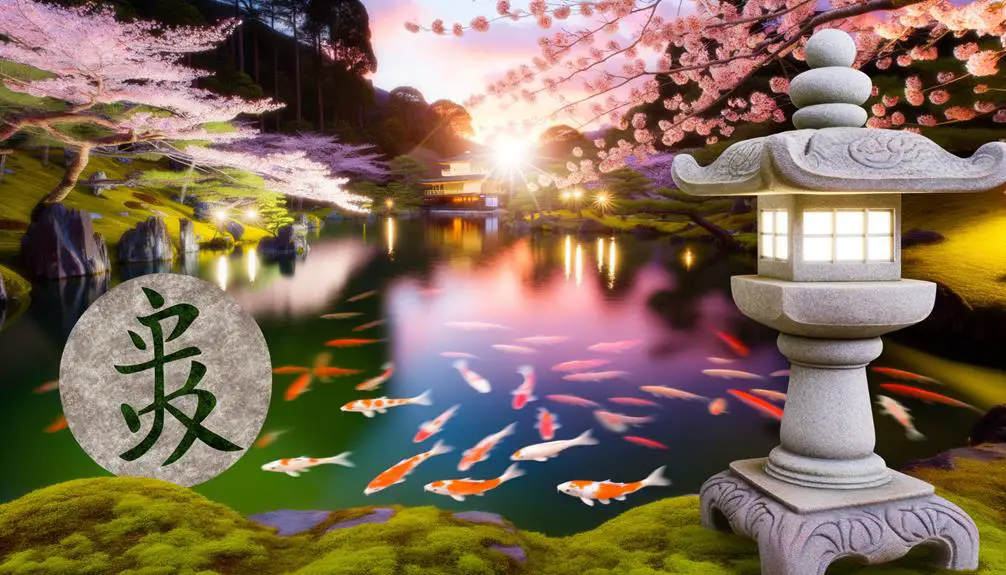
Japanese peaceful landscapes, with their meticulously designed gardens and natural scenery, reflect a deep cultural commitment to tranquility and harmony. Historically, these landscapes draw from Zen Buddhism, emphasizing simplicity and meditation. Iconic elements such as koi ponds, stone lanterns, and carefully pruned bonsai trees are not mere aesthetics but represent philosophical principles of balance and mindfulness.
The cultural significance of these gardens extends beyond visual appeal; they serve as spaces for reflection and spiritual rejuvenation. The Japanese concept of 'wabi-sabi' — finding beauty in imperfection — is inherently woven into these landscapes. This approach underscores a broader societal value, where peace is cultivated through an appreciation of nature's subtle, transient beauty, fostering a serene environment amidst life's chaos.
Festivals Promoting Peace
Beyond the serene beauty of Japanese gardens, festivals such as Tanabata and Obon play a significant role in promoting peace and fostering a sense of communal harmony. Rooted in historical and cultural traditions, these festivals serve as crucial expressions of collective memory and social cohesion.
- Tanabata: Celebrated on July 7th, it symbolizes the meeting of deities Orihime and Hikoboshi, emphasizing hope and togetherness.
- Obon: A Buddhist event honoring ancestors, fostering family unity and reflection.
- Hiroshima Peace Memorial Ceremony: Held on August 6th, commemorates the atomic bombing, advocating for global peace.
- Nagasaki Peace Memorial Ceremony: Observed on August 9th, reinforces the message of nuclear disarmament and reconciliation.
These festivals underscore Japan's commitment to peace through shared cultural practices.
Historical Monuments
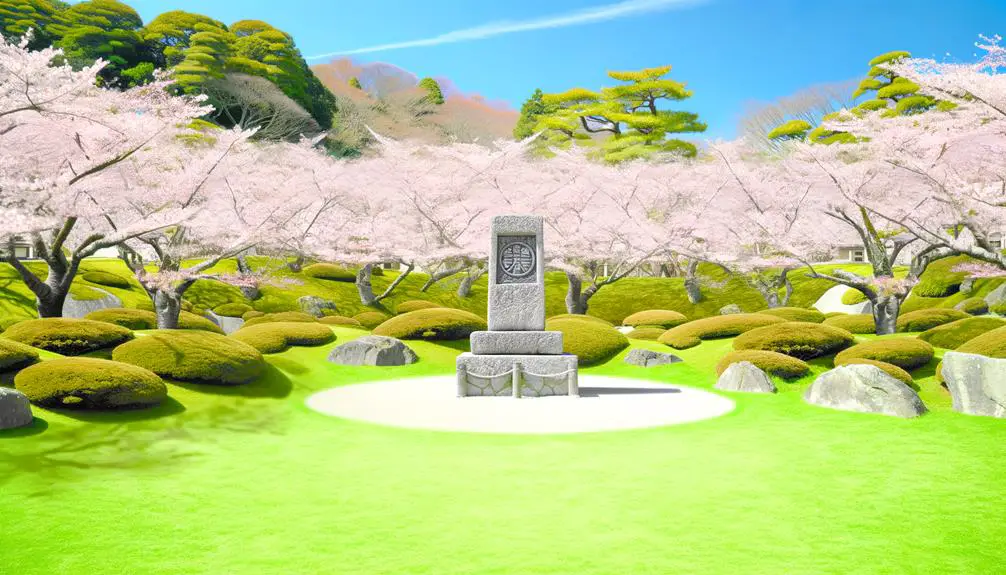
Historical monuments such as the Hiroshima Peace Memorial Park, Nagasaki Peace Statue, and Okinawa Peace Memorial stand as poignant reminders of Japan's commitment to peace and reconciliation. These sites offer profound historical context, commemorating the tragedies of war while symbolizing a collective cultural aspiration for enduring peace.
Each monument not only honors the memory of those affected but also serves as an educational touchstone, fostering a deeper understanding of Japan's pacifist principles.
Hiroshima Peace Memorial Park
Often regarded as a poignant symbol of resilience and hope, Hiroshima Peace Memorial Park commemorates the profound historical and cultural significance of the atomic bombing and serves as a solemn reminder of the human cost of war.
Situated in Hiroshima, Japan, the park encompasses numerous monuments and memorials that collectively narrate the tragic events of August 6, 1945.
- Atomic Bomb Dome: A UNESCO World Heritage site preserved in its post-explosion state.
- Peace Memorial Museum: Offers extensive exhibits detailing the bombing's impact.
- Children's Peace Monument: Inspired by Sadako Sasaki's story, symbolizing the hope for world peace.
- Cenotaph for A-Bomb Victims: An arched tomb inscribed with the names of those who perished.
Through these landmarks, the park emphasizes peace, education, and remembrance.
Nagasaki Peace Statue
Standing as a profound symbol of the pursuit of global harmony, the Nagasaki Peace Statue represents the enduring cultural and historical significance of peace in the aftermath of conflict. Erected in 1955, this towering figure of a man points to the sky with one hand, symbolizing the threat of nuclear weapons, while the other hand extends horizontally in a gesture of peace.
Situated in Nagasaki's Peace Park, the statue serves as a poignant reminder of the atomic bombing on August 9, 1945. The serene expression on the statue's face and the lotus flowers at its base underscore the Japanese values of tranquility and resilience.
This monument not only commemorates the past but also inspires future generations to foster peace and understanding.
Okinawa Peace Memorial
Complementing the message of peace embodied by the Nagasaki Peace Statue, the Okinawa Peace Memorial stands as a tribute to the resilience and sacrifice of those who endured the Battle of Okinawa during World War II. This poignant site offers a multifaceted exploration into a pivotal event that profoundly shaped modern Japan.
The memorial encapsulates:
- Historical context: Commemorating one of the fiercest battles in the Pacific Theater.
- Cultural significance: Honoring the diverse local and international lives lost.
- Educational value: Providing insights into the war's devastating impact.
- Symbol of reconciliation: Promoting global peace and mutual understanding.
Peace in Modern Art
Incorporating the symbol for peace, modern art in Japan frequently reflects a profound cultural synthesis of historical motifs and contemporary ideologies. Artists often draw upon traditional elements such as the kanji for peace (平和, heiwa) and integrate them into avant-garde expressions. This melding not only honors Japan's rich heritage but also engages with global discourses on peace and reconciliation.
The post-war era, particularly after the atomic bombings, has profoundly shaped artistic expressions, making peace a recurring theme. Contemporary works, from installations to digital art, often serve as poignant commentaries on societal values and the human condition. Hence, modern Japanese art transcends mere aesthetics, embodying a collective aspiration for harmony and a reflective dialogue with the past.
Conclusion
The exploration of peace symbols in Japanese culture reveals a multifaceted tapestry where historical context and cultural significance intertwine.
From the kanji for peace (平和) to the crane's symbolism, each element reflects a profound commitment to harmony.
Haiku, origami, and symbolic gardens further encapsulate peaceful ideals, while historical monuments and modern art continually rejuvenate the narrative.
This rich tapestry underscores a collective societal aspiration for enduring tranquility, deeply rooted in Japan's historical and cultural consciousness.

